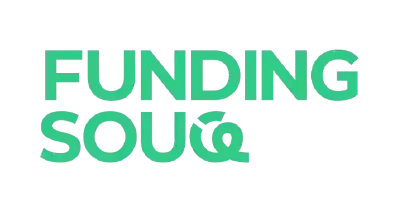Guide to Shariah-Compliant Microfinance in the UAE
Microfinance may involve tiny loans, but it’s spawned a massive market. In 2022, the total market size by gross loan portfolio was $182.7 billion,
according to a report on global microfinance. Its rapid growth is unsurprising, given that it has served as a lifeline for millions of people that can’t get access to finance.
But what makes microfinance different from traditional lending? Below is a guide to the ever-expanding world of microfinance. We’ve highlighted some examples from the United Arab Emirates and,
keeping with the theme of this blog, break down how the practice has been made shariah compliant, so you don’t have to compromise on your Islamic ethics.
What is Microfinance?
Microfinance is essentially what it sounds like – it means extremely small (hence, “micro”) levels of financing, usually allocated to individuals who do not have access to traditional financing from a bank.
The concept first took shape in the 1970s in Bangladesh when economist Muhammad Yunus began providing tiny loans to impoverished entrepreneurs to help them start businesses. Since then the practice has exploded. Nowadays hundreds of millions of people are tapping microfinance to shore up their businesses and everyday needs.
How does microfinance broaden access to finance?
Traditional bank finance is often difficult to tap – whether you're an up and coming entrepreneur or an ordinary worker. Simply put, banks are averse to risk.
If you want their money, you are likely going to have to put up collateral (e.g. a physical asset like property or a car) or have stellar credit history. This puts financing out of reach to vast numbers of people worldwide, particularly those in rural areas or with lower incomes.
This is where microfinancing comes in. It is designed to allocate small, targeted financing to individuals who may not have collateral or established credit histories. The amounts are typically lower than traditional bank lending – it can be a few hundred dollars to cover some startup costs that are just beyond the capacity of a small business.
Read more: Collateral Assessment: How Lenders Evaluate And Determine Loan Eligibility For SMEs
How has microfinance developed over time?
Traditionally microfinancing was meant to alleviate poverty, empower female entrepreneurs and promote financial inclusion. While it still is used for that today,
its applications have become broader as public and private investors have supported its expansion.
Many microfinancing programs are accompanied by services that train individuals on financial literacy and business. Today SMEs and new businesses can benefit from a range of microfinance options.
Does microfinance come with tougher conditions?
Microfinance lending is usually repaid on a shorter time horizon. Usually borrowers have to pay the money back in under a year.
Traditional microfinance also comes bearing higher interest rates to reflect the risk level of the borrower – but here we’re going to focus on shariah-compliant microfinance, which doesn’t involve interest (more below).
What does sharia-compliant microfinance look like?
As microfinance has gone mainstream and become more common, there’s a growing number of sharia-compliant options. The key difference is that sharia-compliant microfinance uses profit-sharing arrangements, mark-up financing, or fee-based services so that there are no interest-bearing loans that are forbidden by Islam.
The two most common shariah-compliant arrangements are:
- Mudarabah contracts : the microfinance institution buys the goods on the borrower’s behalf and sells it to them at a marked up rate.
- Musharakah: The microfinance institution and the borrower enter into a joint venture and share in the profits and losses made from the business venture.
This shared risk model promotes transparency and best practices since both parties have a keen interest in the business succeeding.
Read more about: The Basic Guide to Mudarbah Contacts
What are my options in the UAE for microfinance?
Several banks and institutions offer micro-financing options in the UAE. Emirates Development Bank was named Best Micro Finance Bank in the Middle East in 2022 for their support of SMEs with micro lending, so they’re worth checking out.
Other options include:
1- Khalifa Fund for Enterprise Development
Among the Khalifa Fund’s many offerings to support SMEs includes programs for shariah-compliant microfinancing. You can check their main website to see which programs may be right for you.
2- Dubai SME
while not strictly dedicated to microfinancing, Dubai SME offers a range of financing and services for small businesses.
Read more: The UAE Lending Initiatives For SMEs
What other UAE-based services for micro-entrepreneurs are available?
Microfinancing is not just about getting small loans. It’s about offering small-scale services to entrepreneurs who may not have the means to access what is available to large,
well funded businesses. Here too there’s a growing number of services to make doing business easier for micro businesses.
A few examples include:
PayTabs - this is a payments solutions site that offers services helpful to small business operations – things like digital invoicing and payments processing including services that are sharia-compliant.
Telr - Provides online payment solutions for businesses based in the UAE and which accept payment from customers worldwide.
myZoi - UAE-based fintech startup myZoi offers solutions for payroll, digital remittances, and services to make transfers easy and cost efficient for the underbanked.
Sage - This platform has a UAE branch and offers a variety of accounting services
Disclamer:
This post is for educational purposes only, and does not constitute investment advice or a solicitation to take any financial action. It should not be relied upon when making investment or financing decisions



